University of Michigan: Solving the Sun’s Super-Heating Mystery with Parker Solar Probe
Posted on 2019-06-06 12:11:31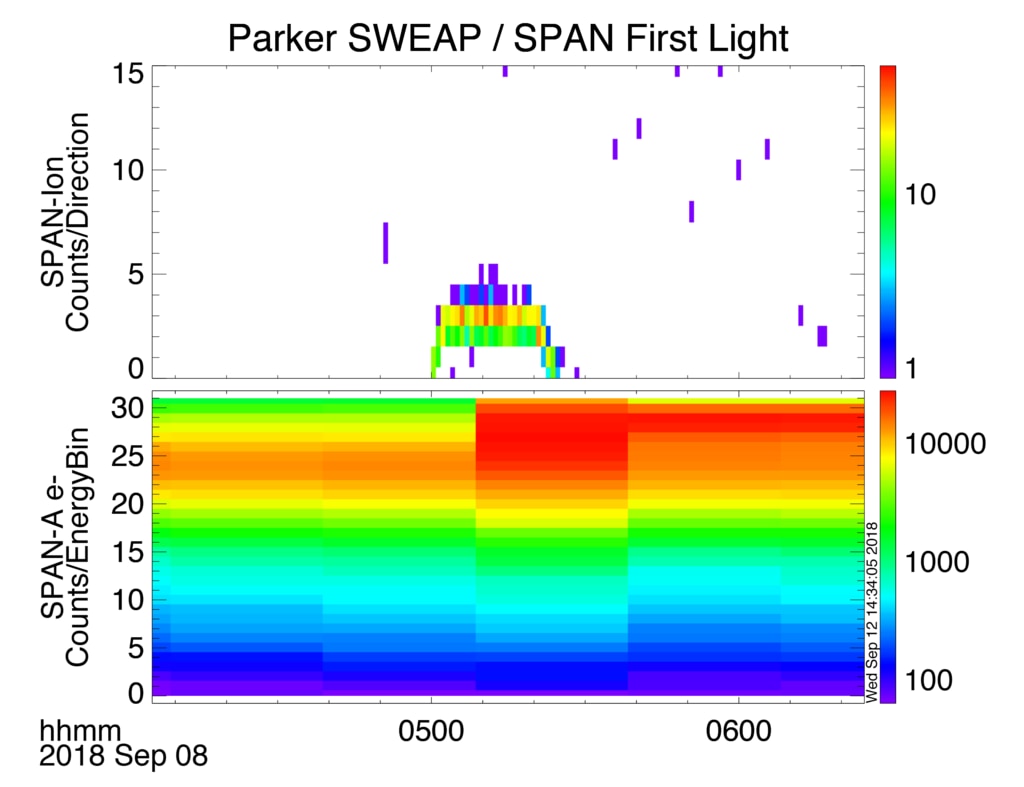
First light data from the SPAN-A (Solar Probe Analyzer Ahead) instrument aboard Parker Solar Probe, which is part of the SWEAP (Solar Wind Electrons Alphas and Protons) instrument suite. This data shows measurements of solar wind ions (top) and solar wind electrons (bottom).
Credit: NASA/University of Michigan/Parker Solar Probe
High-Res Image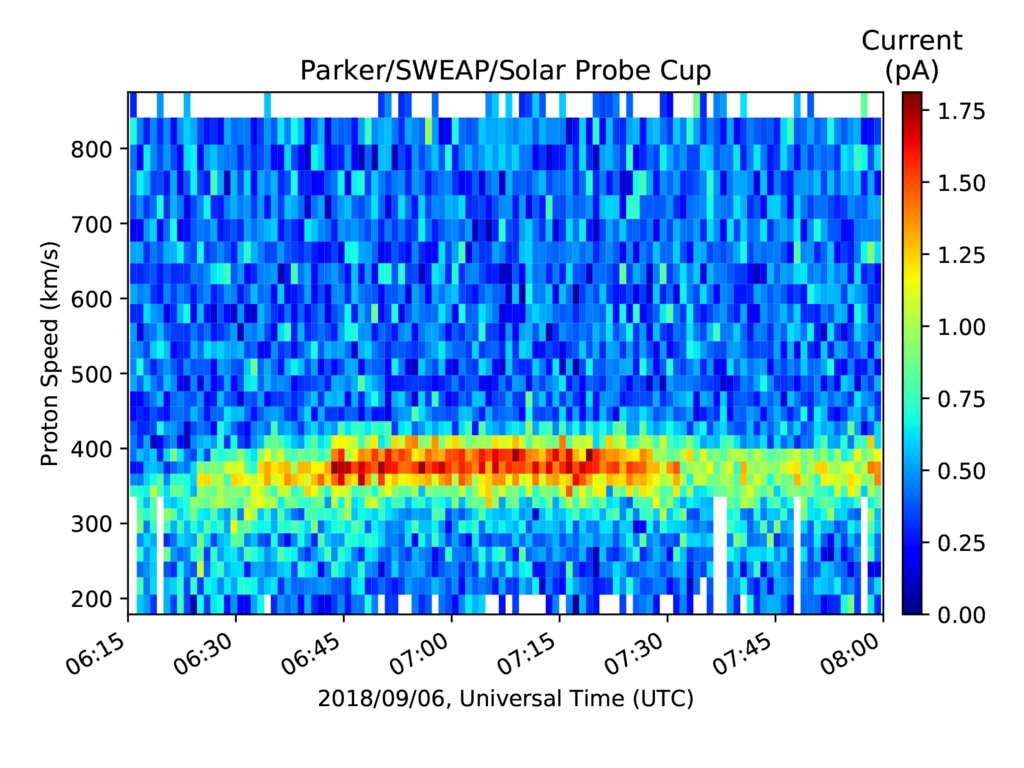
Early data from the Solar Probe Cup, part of the SWEAP (Solar Wind Electrons Alphas and Protons) instrument suite aboard Parker Solar Probe, showing a gust of solar wind (the red streak).
Credit: NASA/University of Michigan/Parker Solar Probe
High-Res Image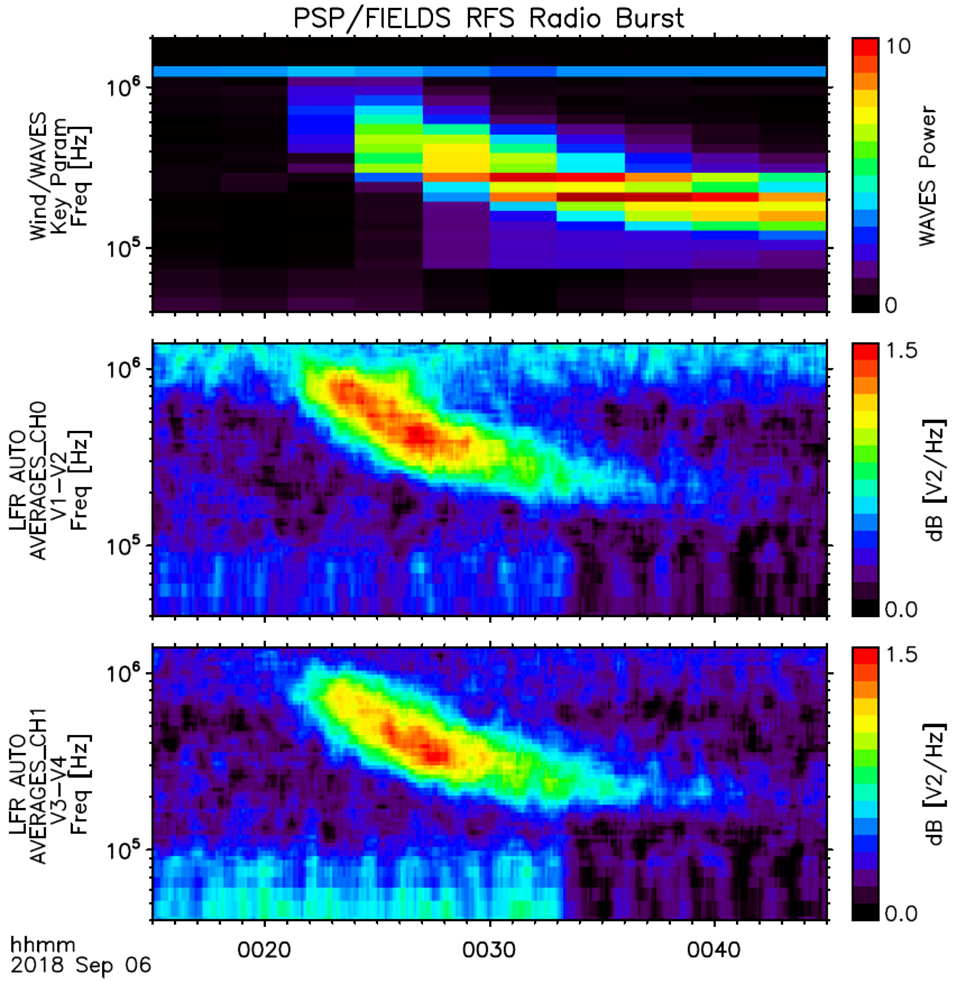
This plot was updated on Sept. 21, 2018, to better illustrate the comparison between Parker Solar Probe’s data (center and bottom) and the data from the Wind mission (top).
Credit: NASA/UC Berkeley/Parker Solar Probe
High-Res Image
Data gathered during the FIELDS suite's boom deployment, measuring the magnetic field as the boom swung away from Parker Solar Probe. The early data is the magnetic field of the spacecraft itself, and the instruments measured a sharp drop in the magnetic field as the boom extended away from the spacecraft. Post-deployment, the instruments are measuring the magnetic field in the solar wind.
Credit: NASA/UC Berkeley/Parker Solar Probe
High-Res Image
First light data from EPI-Hi (the higher-energy Energetic Particle Instrument), part of the ISʘIS (Integrated Science Investigation of the Sun) suite aboard Parker Solar Probe.
Credit: NASA/Princeton University/Parker Solar Probe
High-Res Image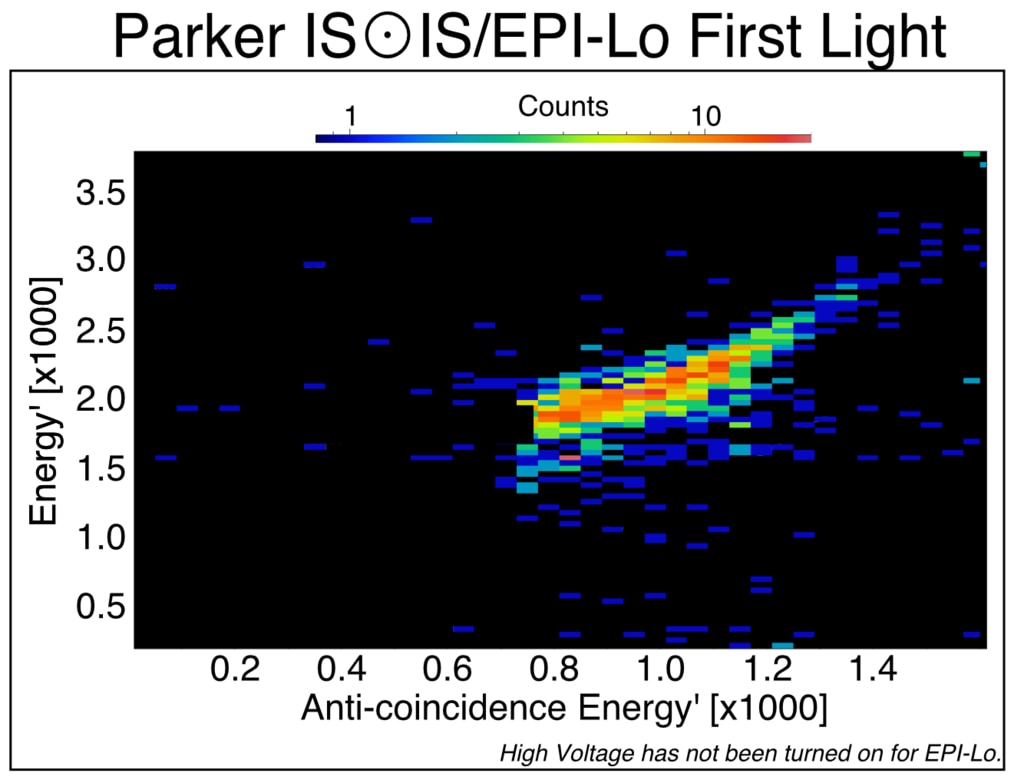
First light data from EPI-Lo (the lower-energy Energetic Particle Instrument), part of the ISʘIS (Integrated Science Investigation of the Sun) suite aboard Parker Solar Probe.
Credit: NASA/Princeton University/Parker Solar Probe
High-Res Image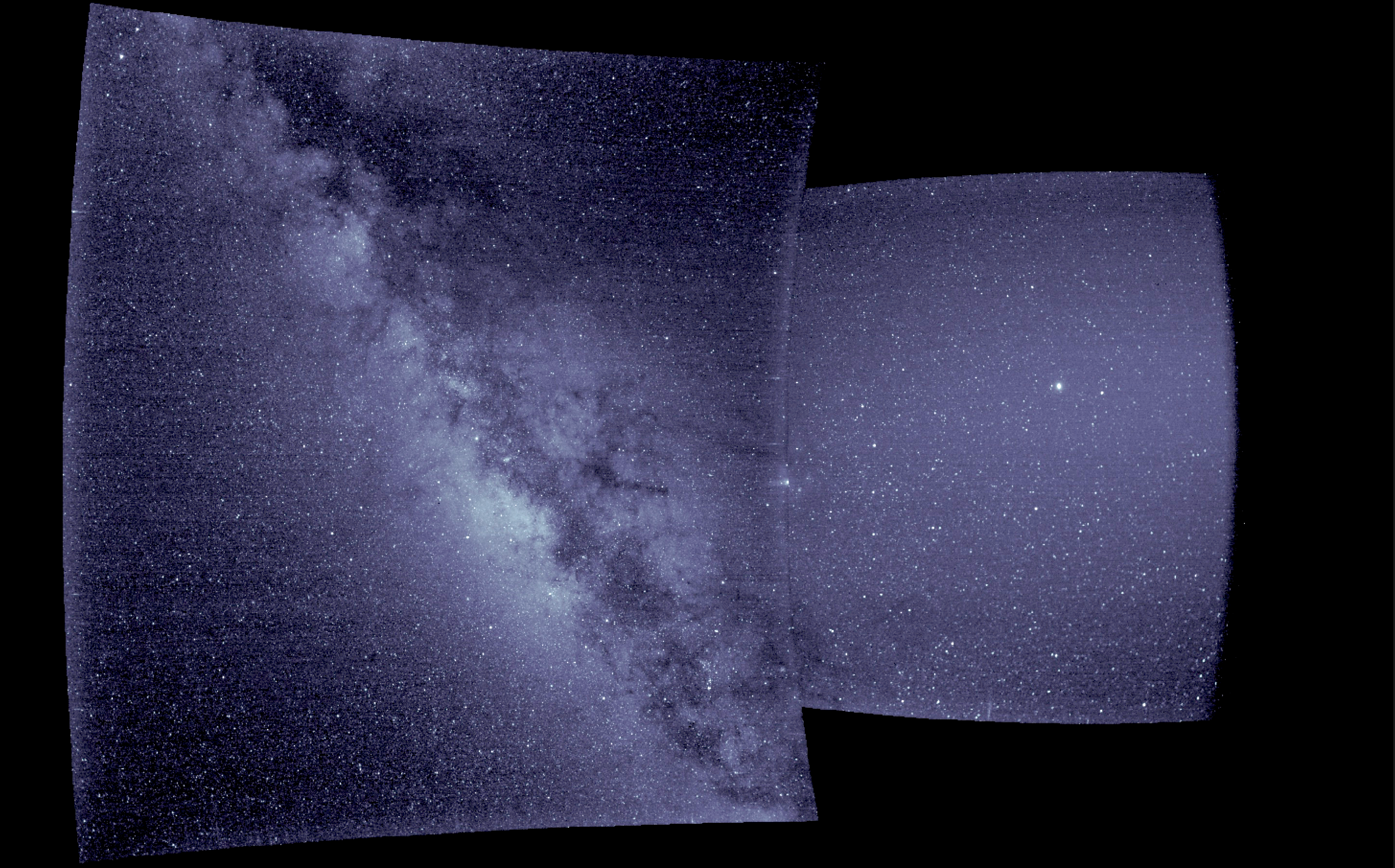
First light data from Parker Solar Probe's WISPR (Wide-field Imager for Solar Probe) instrument suite. The right side of this image — from WISPR's inner telescope — has a 40-degree field of view, with its right edge 58.5 degrees from the Sun's center. The bright object slightly to the right of the image's center is Jupiter. The left side of the image is from WISPR's outer telescope, which has a 58-degree field of view and extends to about 160 degrees from the Sun. There is a parallax of about 13 degrees in the apparent position of the Sun as viewed from Earth and from Parker Solar Probe.
Credit: NASA/Naval Research Laboratory/Parker Solar Probe
High-Res Image